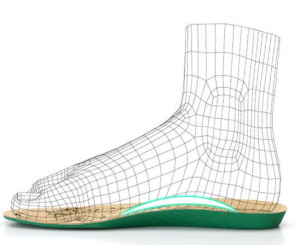MATURE FEET REMAINING ACTIVE
Description
Experts in arch support offer a detailed introduction to some of the most common foot disorders, as well as prevention and treatment options such as shoe inserts.
As you get older, your feet go through six strange things.
From the first day you began walking through this morning’s run or walk, they have carried you about. Given how much our bodies have evolved over time, it’s no surprise that our feet have changed as well, with Flat Feet or Fallen Arches becoming more common as we age. Here’s a quick test from Prevention to see if you have a certain arch type.
The following are six common foot ailments that typically appear as people get older, as well as how to treat them.
The Symptoms of Arthritis
There are around 30 joints in your feet, all of which can degenerate with time. Arthritis commonly affects the metatarsal or big toe joints on the top of your foot (Verywellhealth.com). In addition to pain, you may experience stiffness in the mornings, which improves as you move around and worsens at night.
Exercises to increase range of motion, weight loss, and shoe inserts for overweight people can all help. Furthermore, arthritis in the knees and hips has a trickle-down impact, affecting the alignment in ways that can produce pain on the outside or inside of your feet. If your joints pain at any time, see your doctor; addressing knee and hip arthritis with medicine or exercise can often ease the pressure on your feet as well.

Circulation becomes more sluggish.
Blood circulation in your feet might be slowed by vein disease, diabetes, and other problems that grow more common as you become older. A wound from a new-shoe blister or stepping on a sharp object heals more slowly as a result of this. When you combine this with nerve damage (which is common in people with similar health problems), you could be unaware of a developing infection, resulting in an ulcer that won’t heal.
If you experience any of these problems, consult a podiatrist as part of your medical team. Examine your feet on a regular basis for scratches and cuts, and seek treatment as soon as possible. For a more pleasant viewing experience, try installing a floor mirror in the bathroom.
Ligaments Expand
Ligaments, on the other hand, are connective tissues that can stretch over time, causing your arch to pain and your foot to flatten (Britannica). Furthermore, the sensors that normally signal the brain when the ligaments get overloaded (think of them as the backup sensors for joints) begin to malfunction. This throws you off balance and puts you at risk of a succession of ankle sprains.
An arch provides strength and stability to a healthy foot. When you lose arch support, your feet lose their stability. That is why orthotic devices are so important, not only for pain management but also for prevention. Numerous studies have shown that wearing high-quality orthotic shoe inserts can aid improve foot muscle activation, especially during exercise. Wearing a Customizable Arch Support while exercising or participating in sports can assist you in remaining steady. Exercises that strengthen the ankles, such as toe lifts and ankle circles, can help with stability.
Tendon Tightening is a term used to describe the process of tightening tendons.
Not so nimble in yoga class right now? One cause could be that as you become older, the water levels in your tendons drop, causing the cords in your ankles to tighten. This can not only throw off your downward dog, but it also puts you at danger for fractures and rips.
Maintaining a high level of activity can assist to mitigate the consequences. This could take as little as 10 minutes per day. If you’ve ever had Achilles tendon damage, using support exercises like lifting your calves will help you avoid relapse. This exercise can also be used to loosen up tight ankles.
Fat Vanishes
On the bottoms of our feet, Mother Nature provides built-in insoles: elastin and collagen cushions filled with fatty tissue (Healthfully.com). Collagen production slows with age, making these fat pads smaller, which is a cruel twist to the spread in middle age.
If you don’t have this cushioning, you might feel OK in the morning, but if you’re in a lot of foot discomfort by the end of the day, it’s possible that you’re walking on bones, which could lead to Plantar Fasciitis. The plantar fascia is a fibrous cartilage layer that runs from the heel to the metatarsal bones on the front of the foot. It is in charge of stabilizing the foot and preventing it from twisting too far. It’s also responsible for the “spring” in your step.
Rest and ice are the primary lines of defense against Plantar Fasciitis pain. A nylon brace that fits around the foot could potentially be used to assist support it. However, these are only short-term fixes. Wearing correct fitting shoes and using excellent shoe insoles is a better long-term option. Preventing foot discomfort requires stabilizing the foot, which orthotic devices can aid with.
According to a study
